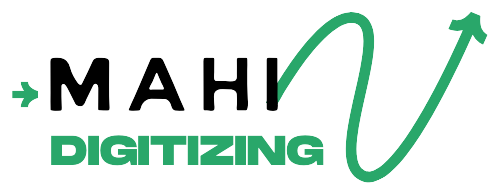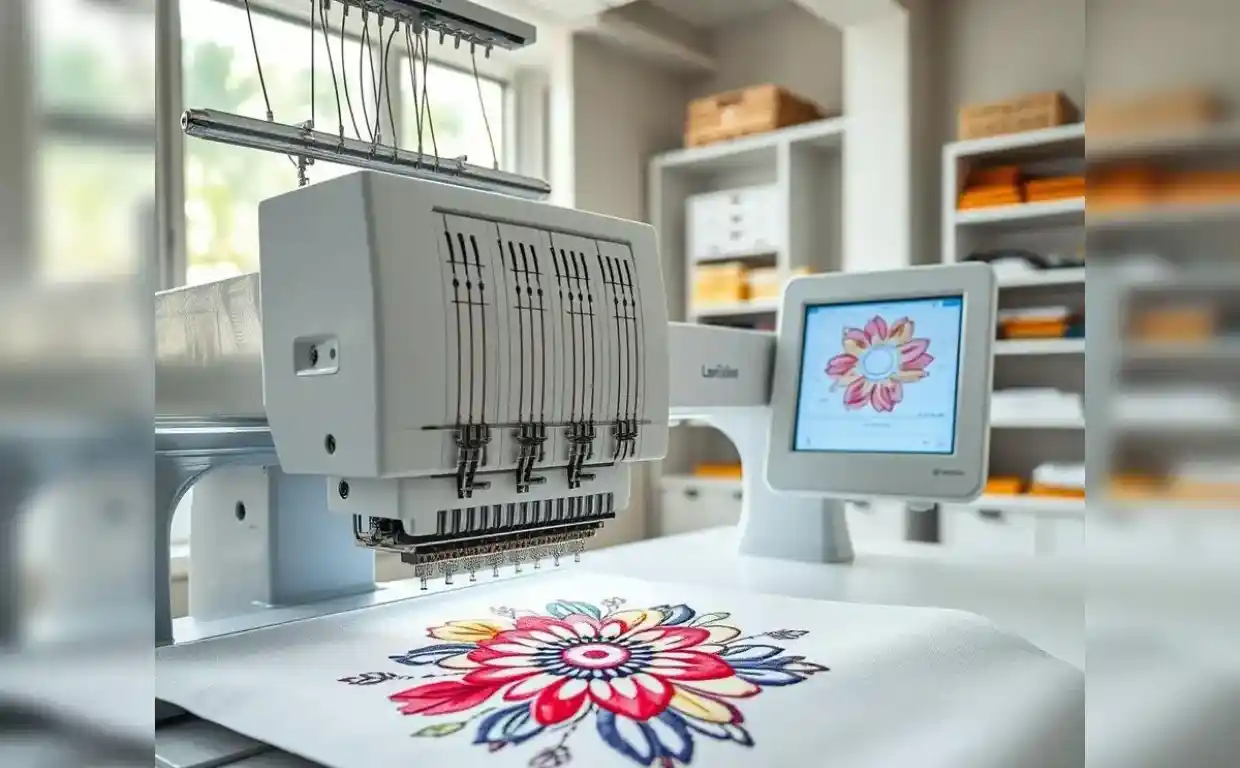Lettering plays a crucial role in embroidery—from names on uniforms to logos on apparel. As technology advances, AI and automation are revolutionizing how digitizers handle text-based designs. At Mahi Digitizing, we’re leading the shift toward faster, smarter, and more precise lettering digitizing.
How AI Is Entering the Embroidery Industry
Artificial intelligence is transforming traditional industries, and embroidery is no exception. Through machine learning and predictive algorithms, AI can now analyze artwork, recognize fonts, and create digitized paths for embroidery machines automatically.
In lettering digitizing, AI tools can detect font types, adjust kerning, and even assign optimal stitch types based on fabric and thread specifications.
These technologies are not replacing digitizers but enhancing their efficiency and minimizing repetitive manual work.
By training on vast datasets of stitched lettering, AI systems can predict and correct common issues such as pull compensation and corner overlaps.
At Mahi Digitizing, we’re exploring these tools to bring speed and accuracy into every text-based project we deliver.
Benefits of Automation in Lettering Digitizing
Automation streamlines repetitive processes and increases productivity. In lettering digitizing, this means faster turnaround times, fewer human errors, and improved design consistency across orders.
Once a font is mapped and optimized, automation allows the same style to be reproduced across different names, sizes, and placements seamlessly.
This is particularly useful for uniforms, sports jerseys, or corporate apparel that require multiple custom name placements with the same font and size.
With automation, designs remain consistent in density, spacing, and stitch structure regardless of the order volume.
We use automation not to cut corners, but to maintain quality while delivering faster results for our clients.
The Role of Font Recognition and Stitch Simulation
Font recognition is one of the key breakthroughs in AI-powered digitizing. New software can identify font styles from raster images and match them to digitized templates, drastically reducing setup time.
Moreover, stitch simulation tools driven by AI can preview how text will appear on different materials. This predictive capability helps avoid design flaws before production begins.
Instead of relying on guesswork, digitizers can now visualize pull, push, and density in real time—saving time and fabric waste.
When simulating on stretchy or textured fabrics, the system adjusts the stitch types automatically to ensure stability and clarity.
We test every new AI feature alongside traditional methods to ensure that the outcome meets our professional embroidery standards.
Challenges with AI-Based Lettering Digitizing
Despite its promise, AI still faces limitations in complex typography and stylized fonts. Many script or decorative fonts require manual intervention to maintain stitch logic and aesthetic appeal.
Also, AI tools can sometimes misinterpret overlapping elements or intricate borders within letters—leading to gaps or inconsistencies in stitching.
That’s why human expertise remains vital. We combine AI speed with professional judgment to refine spacing, adjust underlay, and preserve the artistic intent of every design.
Automation is only as good as the human who trains it—and we continue to guide every project with a hands-on approach.
At Mahi Digitizing, we believe the best outcomes blend technology with craftsmanship.
Types of Lettering That Benefit from Automation
- Block and Sans-Serif Fonts: Ideal for school, team, and military uniforms.
- Corporate Branding Fonts: Consistent stitching across logos and promotional wear.
- Name Tags: Easy replication for employee apparel or ID patches.
- Caps and Monograms: Speedy production of personalized accessories.
- Jersey Lettering: Bulk name/number combos with identical formatting.
We have template libraries built to accelerate digitizing for these commonly used formats without sacrificing quality.
How AI Improves Consistency and Quality Control
One major advantage of using AI in lettering embroidery digitizing is consistency. Whether you’re producing five shirts or five hundred, automated processes ensure that stitch density, alignment, and spacing remain uniform.
AI also monitors thread paths and stitch direction to reduce breaks and minimize production issues on embroidery machines.
This automated quality control saves time and reduces waste in production runs—especially for high-volume orders.
We regularly audit stitch files using AI-powered simulations to verify machine-readiness before sending the design to production.
This results in more predictable outcomes and greater customer satisfaction.
What the Future Holds for Embroidery Digitizing
The future of lettering embroidery digitizing is headed toward fully integrated platforms that combine AI, cloud computing, and real-time production feedback.
We’re already seeing platforms that recommend stitch types based on garment material and preview how letters will look on curved surfaces like caps or sleeves.
In the near future, you may be able to upload a list of names, choose a font, and receive digitized files with uniform formatting—all generated in minutes.
Although this future is exciting, quality digitizing will always require experienced professionals who understand both machines and materials.
At Mahi Digitizing, we’re committed to evolving with technology while maintaining the quality and craftsmanship our clients expect.
Partner with Mahi Digitizing for Smart Lettering Solutions
Whether you’re producing custom monograms, team names, or corporate embroidery, Mahi Digitizing blends automation with human expertise for flawless lettering digitizing results.
We use AI tools to speed up turnaround without compromising accuracy, making us the go-to source for high-volume, precision lettering projects.
From bold block fonts to stylized scripts, we ensure every design is digitized for durability, clarity, and production success.
Get a quote today or reach out to our team to experience the future of embroidery digitizing—powered by AI, delivered by Mahi.

